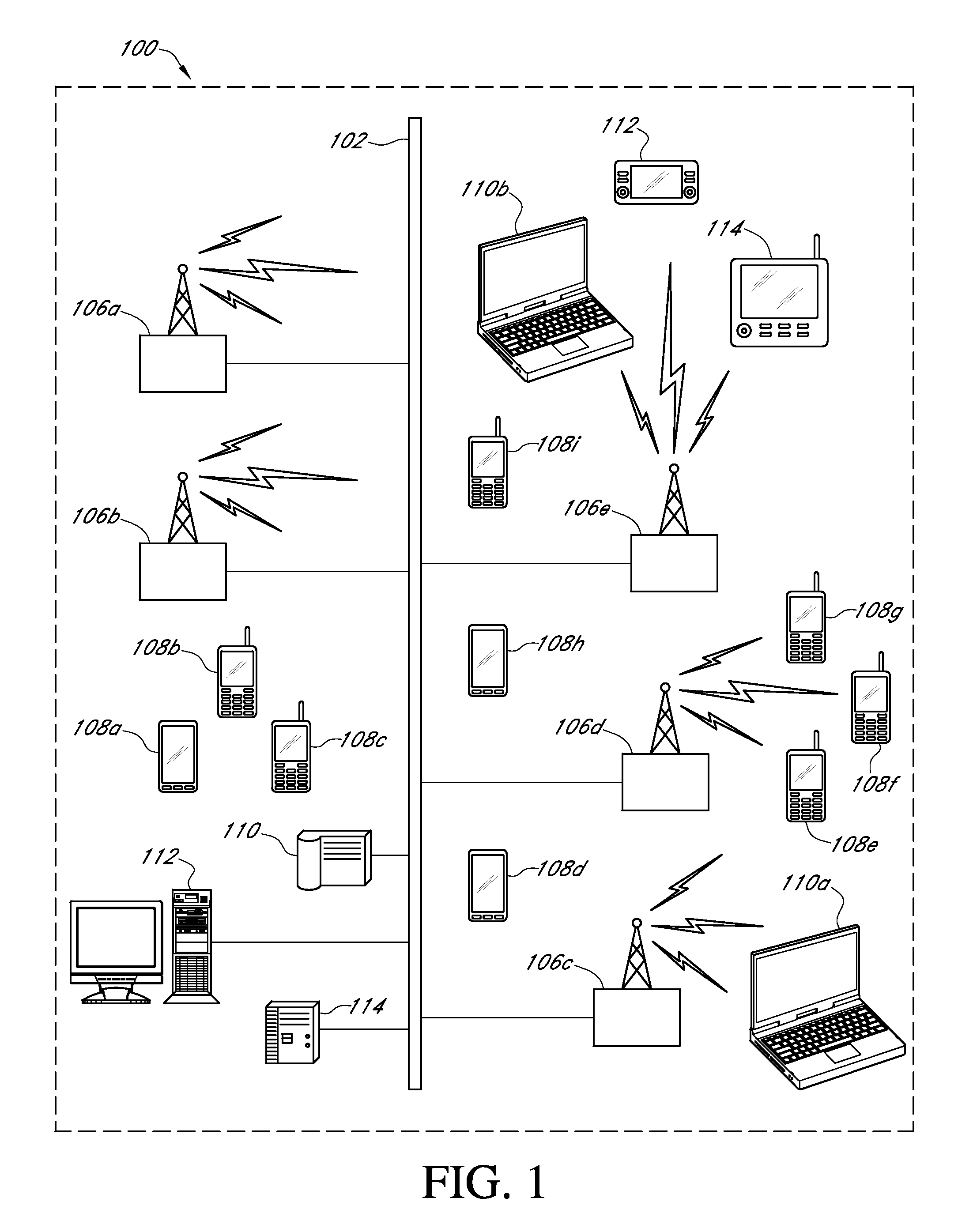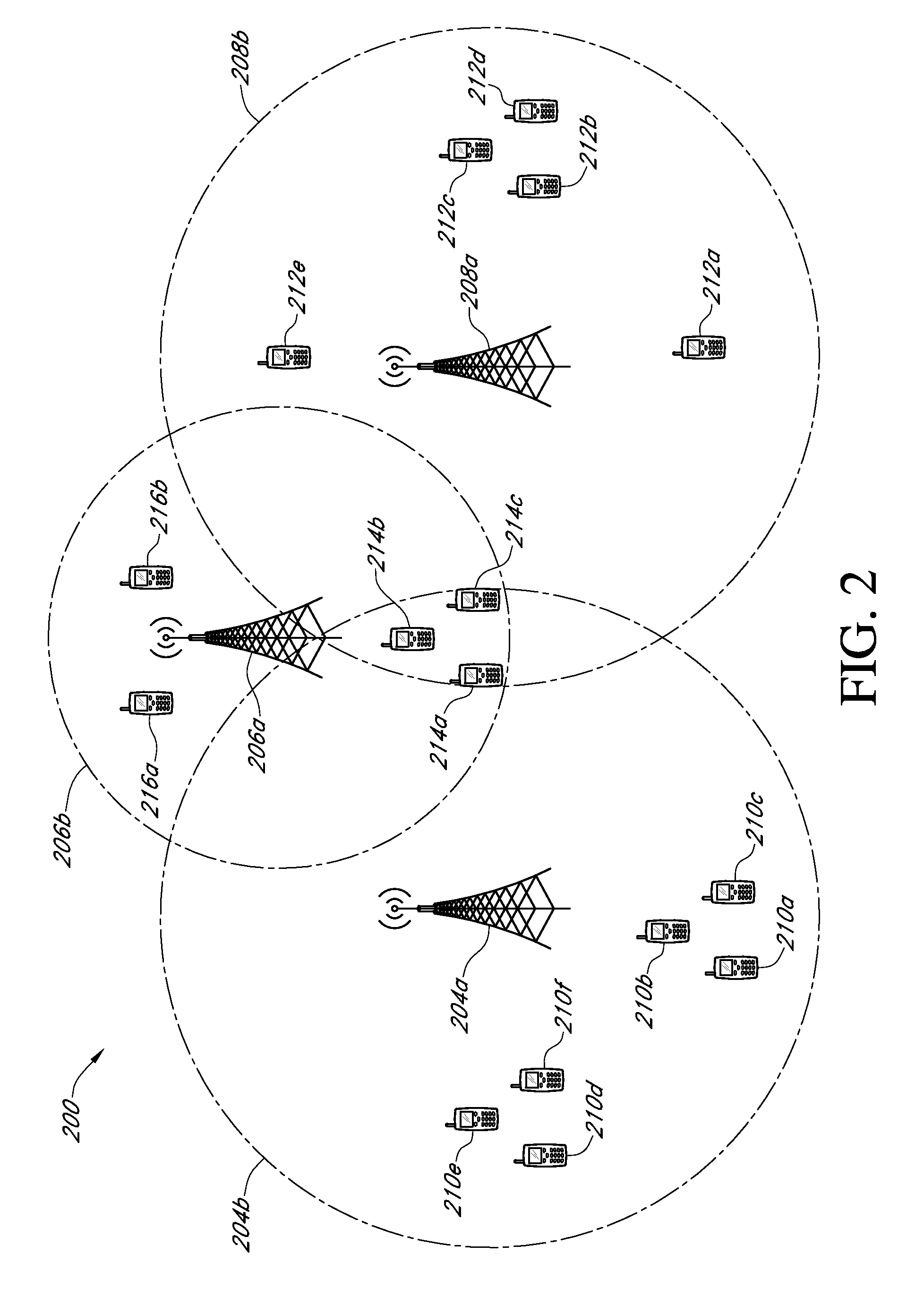Systems and methods for autonomously determining network capacity and load balancing amongst multiple network cells
a network cell and network capacity technology, applied in the field of self-organizational emerging 4 g networks, can solve the problems of unfavorable network capacity reduction, unique network resource consumption patterns, and prior network resource allocation solutions that do not adequately account for network capacity relating to aggregate network subscriber usage metrics
- Summary
- Abstract
- Description
- Claims
- Application Information
AI Technical Summary
Benefits of technology
Problems solved by technology
Method used
Image
Examples
Embodiment Construction
[0030]In accordance with an exemplary embodiment of the present invention, FIG. 1 illustrates a network computing system 100 including various wireline and wireless computing devices that may be utilized to implement any of the radio channel available capacity, forecast maximum radio channel available capacity, neighboring cell negotiation, and network handover processes associated with various embodiments of the present invention. The networked computing system 100 may include, but is not limited to, a group of service provider controller devices 110, 112, and 114 (also referred to here as Network Resource Controllers or NRCs); network base stations 106a-e that may include NRC functionality and may have overlapping wireless coverage with one or more neighboring base stations within a particular region of the networked computing system 100; multiple user equipment, including: cell phone / PDA devices 108a-i, laptop / netbook computers 110a-b, handheld gaming units 112, electronic book d...
PUM
 Login to View More
Login to View More Abstract
Description
Claims
Application Information
 Login to View More
Login to View More - R&D
- Intellectual Property
- Life Sciences
- Materials
- Tech Scout
- Unparalleled Data Quality
- Higher Quality Content
- 60% Fewer Hallucinations
Browse by: Latest US Patents, China's latest patents, Technical Efficacy Thesaurus, Application Domain, Technology Topic, Popular Technical Reports.
© 2025 PatSnap. All rights reserved.Legal|Privacy policy|Modern Slavery Act Transparency Statement|Sitemap|About US| Contact US: help@patsnap.com



